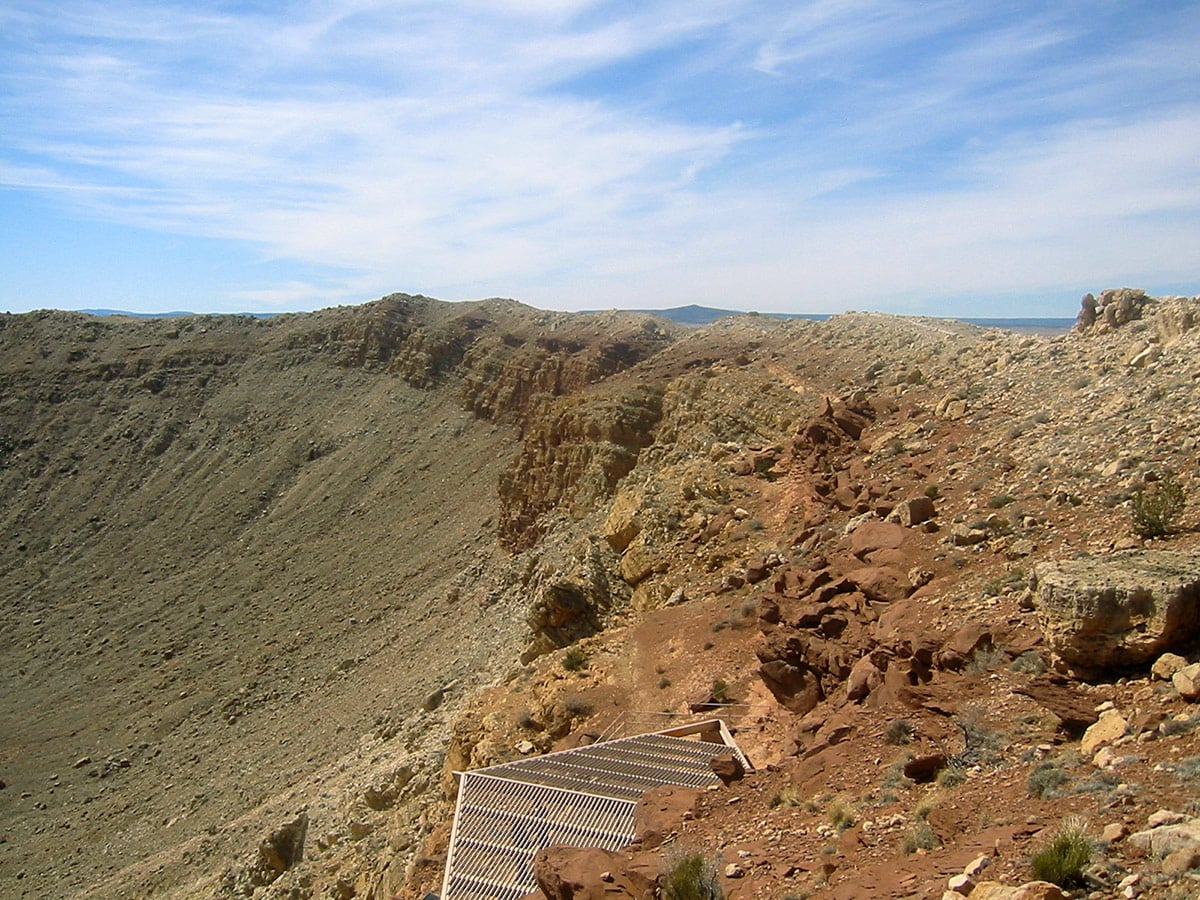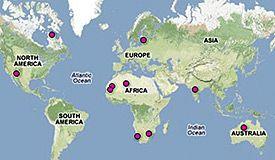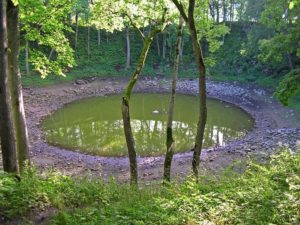World 🢖 North America 🢖 United States 🢖 Arizona
Impact craters 🢔 Geological wonders 🢔 Categories of wonders
Wonder
Meteor crater (Barringer crater)
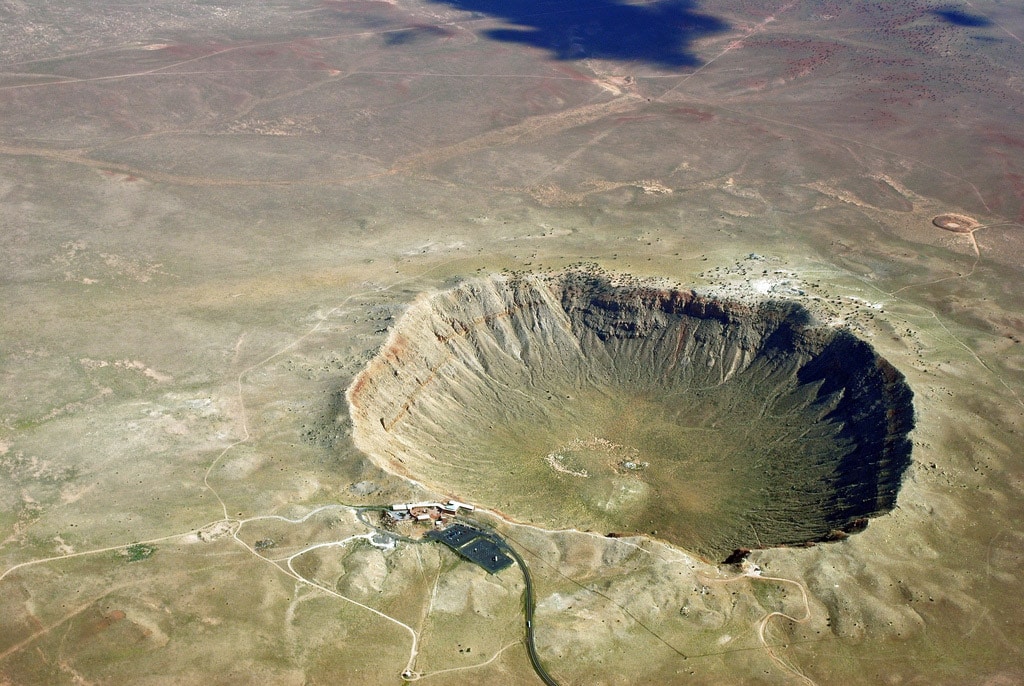
 In short
In short
The tale of Meteor crater (Barringer crater) is tale about success – hard won success of scientific thought through great offering, effort and mistakes.
 67.7%
67.7%
GPS coordinates
Location, address
Alternate names
Diameter
Depth
Age
Map of the site
If you see this after your page is loaded completely, leafletJS files are missing.
 In detail
In detail
This is one of the best-preserved impact craters on Earth, a truly unique place where one can learn, what happens when Earth is bombarded by a meteorite.
Description
Meteor crater is located in a desert with scarce vegetation cover. It is very impressive. Rims of the crater are visible from far away and rise up to 45 m above the surrounding plains.
When one reaches the rim, there opens a grand view on approximately 1,200 m wide, up to 170 m deep crater. The crater is not entirely round but rather square, which, possibly, is caused by joints in bedrock.
The impact
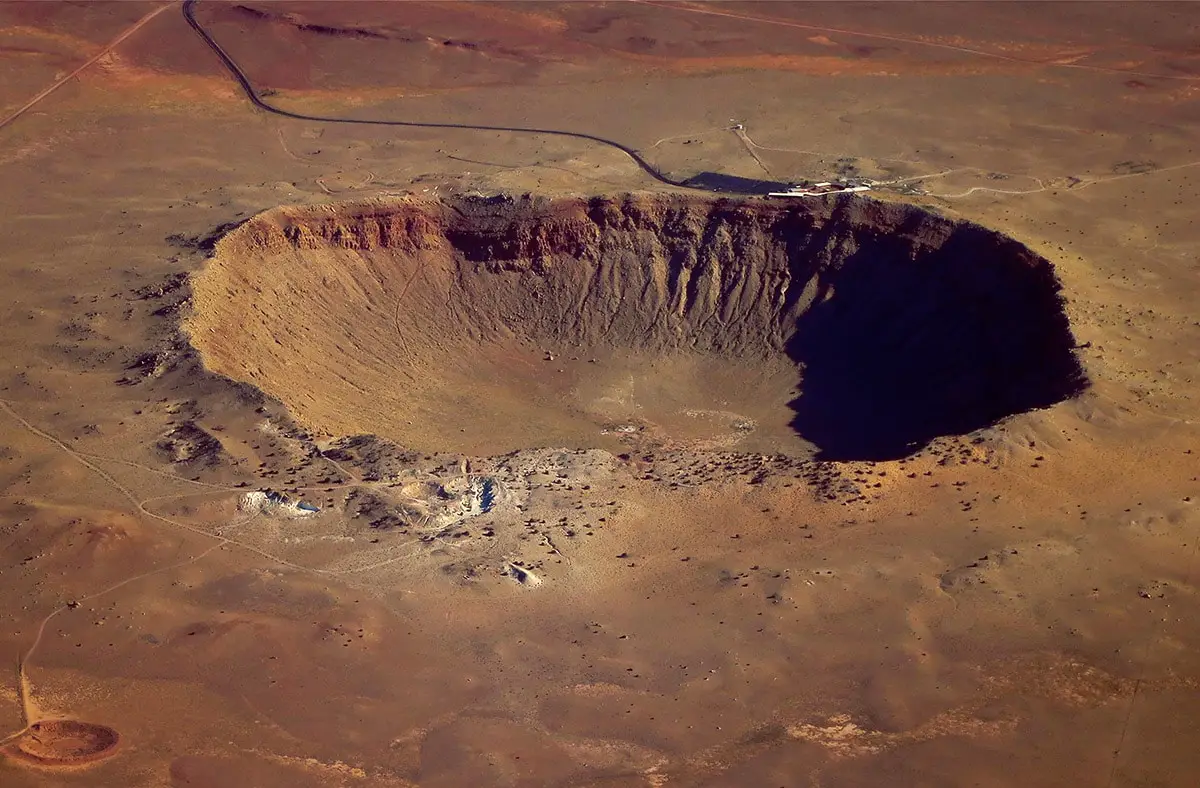
50,000 years ago the climate in Arizona was more temperate than now. This was the ice age – further, in the north, there were giant glaciers, but there were growing forests, walking large Pleistocene mammals – mammoths, ground sloths, and other animals. Most likely this place was devoid of people – they came later.
Impact was almost as fast as lightning.
Some 300 000 tons heavy, 50 m wide iron-nickel meteorite hit the ground with a speed of 12.8 km per second.
Meteorite lost approximately half of its mass before hitting the ground – and the remaining part exploded and evaporated when it blasted in the ground. Most of the metal mixed with the blasted rocks.
The force of the impact was approximately 2.5 megatons – 150 times more than the atomic bomb in Hiroshima. Countless animals and plants died immediately, whole plain turned into a lifeless desert.
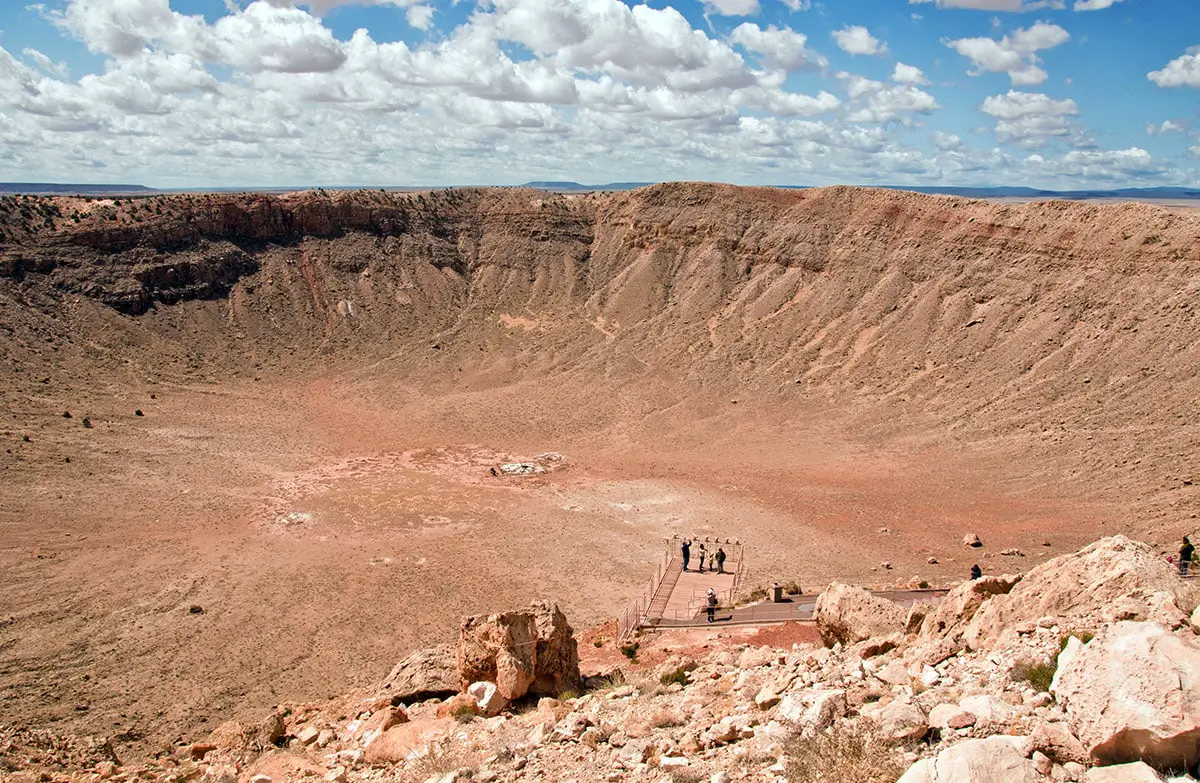
Meteorite pierced Triassic and Permian sediments – mudstone, dolomite, limestone, sandstone. Depth of crater reached some 400 meters, surroundings of crater were covered with upturned rocks. The total mass of uplifted sediments was 175 million tons.
Nature heals itself fast. Soon after the crater was filled with a deep lake. Forest returned, the area was full of life again.
210 – 240 m thick layer of sediments formed on the bed of the lake.
As the climate changed, the lake and forest disappeared, desert environment evolved. This helped to preserve the crater and now Meteor crater is one of the best-preserved impact craters on Earth.
History
Meteorite or volcano?
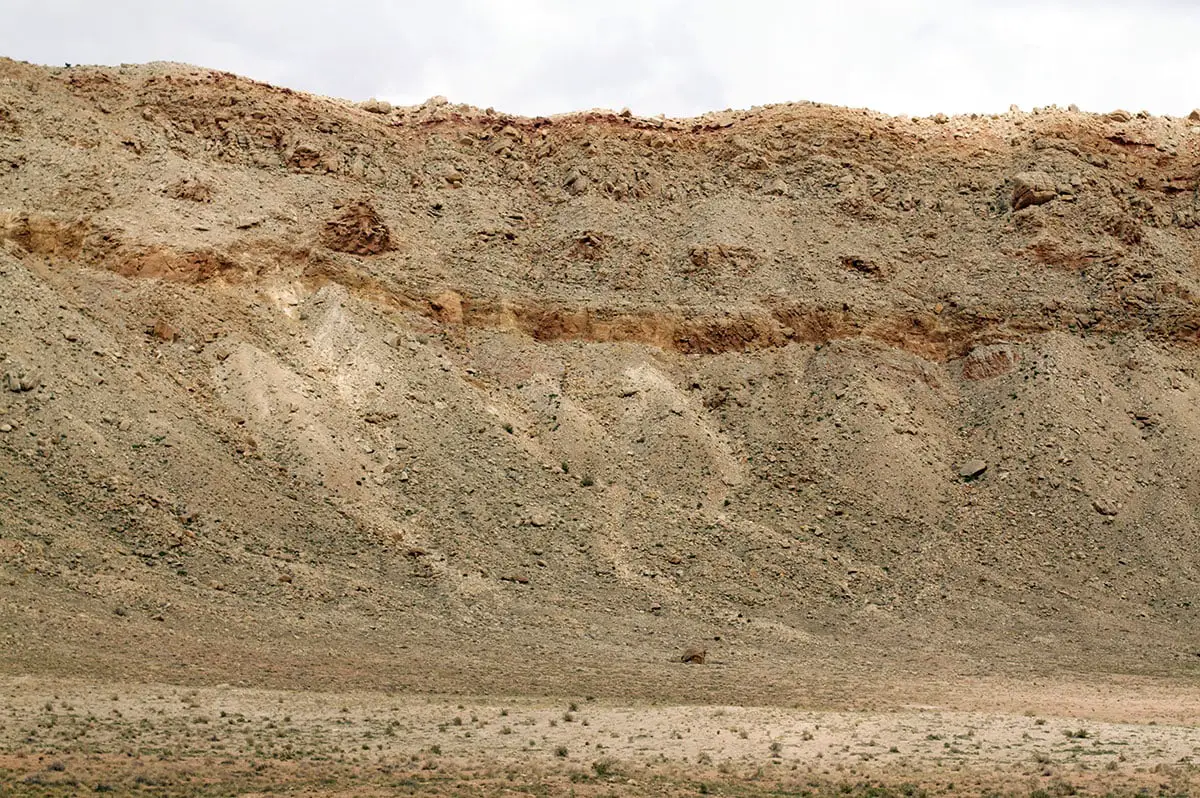
The area around the crater was a well-known location to look for pieces of oxidized iron. It is assessed that some 30 tons of raw iron were found here. The largest known piece is Holsinger meteorite – a 639 kg heavy, 0.9 m long piece, which was found some 2.5 km north from the crater rim in 1911.
Nevertheless the idea that meteorites can create a large crater was something new for science.
In 1891 chief geologist of US Geological Service Grove Karl Gilbert considered that this crater is created either by the explosion of volcanic gas or by a meteorite.
He thought that meteorite should have a similar size to the size of the crater – and that this giant mass of iron should be buried under the crater. Magnetic measurements did not show any significant mass of iron below the crater – thus he concluded that this is an explosion crater caused by volcanic processes.
This hypothesis was widely accepted by the scientific community.
Barringer
When the enterprising lawyer and mine owner Daniel Moreau Barringer (1860 – 1929) learned about the existence of the giant crater in Arizona and pieces of metal found at it, he was convinced that this is a meteorite crater.
He became obsessed with this crater and saw many possibilities in it. If the size of meteorite would be comparable to the size of the crater, here could lie 10,000,000 tons of iron – enough to make its finder one of the richest people in the world.
It was also irritating for Barringer to see that scientists blindly disregard many proofs of meteorite impact and support the hypothesis of volcanic explosion without any direct proof.
Barringer purchased the land (beforehand managing to obtain the name of the local post office – Meteor. This is the formal reason why the crater is officially called Meteor Crater) and established “Standard Iron Company”.
In 1903 – 1905 there were made first drills that did not bring the desired result. They obtained more and more proofs for meteorite impact – but could not find the giant chunk of iron.
There were made up to 419 m deep drills and Barringer spent most of his fortune and ran in debts. In 1929 he obtained proof that large meteorites are vaporized during the impact event. Shortly afterward he died of a heart stroke.
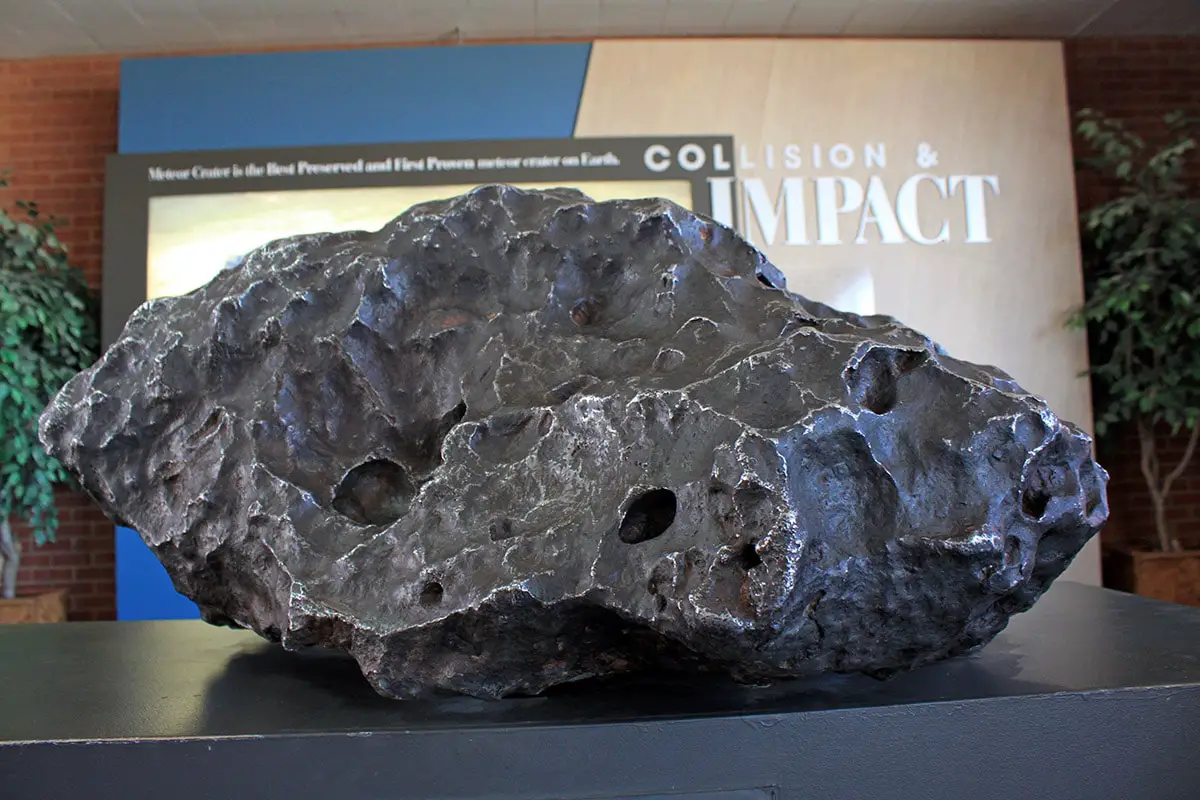
Some discussions about the origin of this crater continued until the 1960s when Eugene Merle Shoemaker added more proof in favor of the impact hypothesis and profoundly described the crater. Here were discovered two rare forms of silica – coesite and stishovite, which are created by extreme overpressure.
The crater is the property of the Barringer family up to this day. This inhospitable, alien-looking crater has served as a true oasis for the scientific research and popularization of science. There is built Meteor Crater Visitor Center on the north rim – it provides rich information about meteorites around the world, space, and astronomy. Access to the bottom of the crater though is limited to scientists.
References
- The Barringer Meteorite Crater, official website. Acessed in the 31st December 2012.
Meteor crater is included in the following articles:
 Linked articles
Linked articles
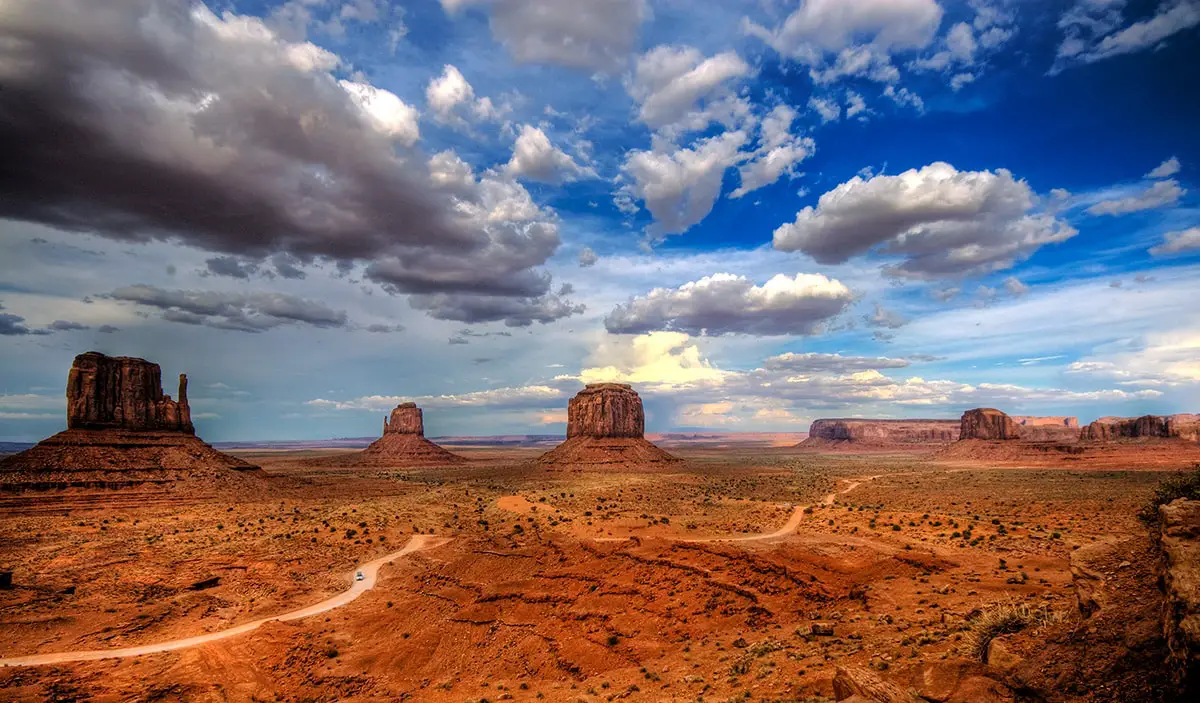
Wonders of Arizona
Some of the world’s most impressive sights are located in Arizona. This American state has such landmarks of world fame as Grand Canyon and Monument Valley.

Impact craters
There are many pieces of solid matter flying around in space. And VERY frequently they fall on the surface of the Earth. There are estimates that every year on Earth fall 18,000 – 84,000 meteorites larger than 10 grams: e.g. one meteorite every 6 – 30 minutes.
This category includes outstanding impact craters – detectable scars on the surface of Earth left by a body coming from outer space. The category includes also meteorites – natural objects from outer space.
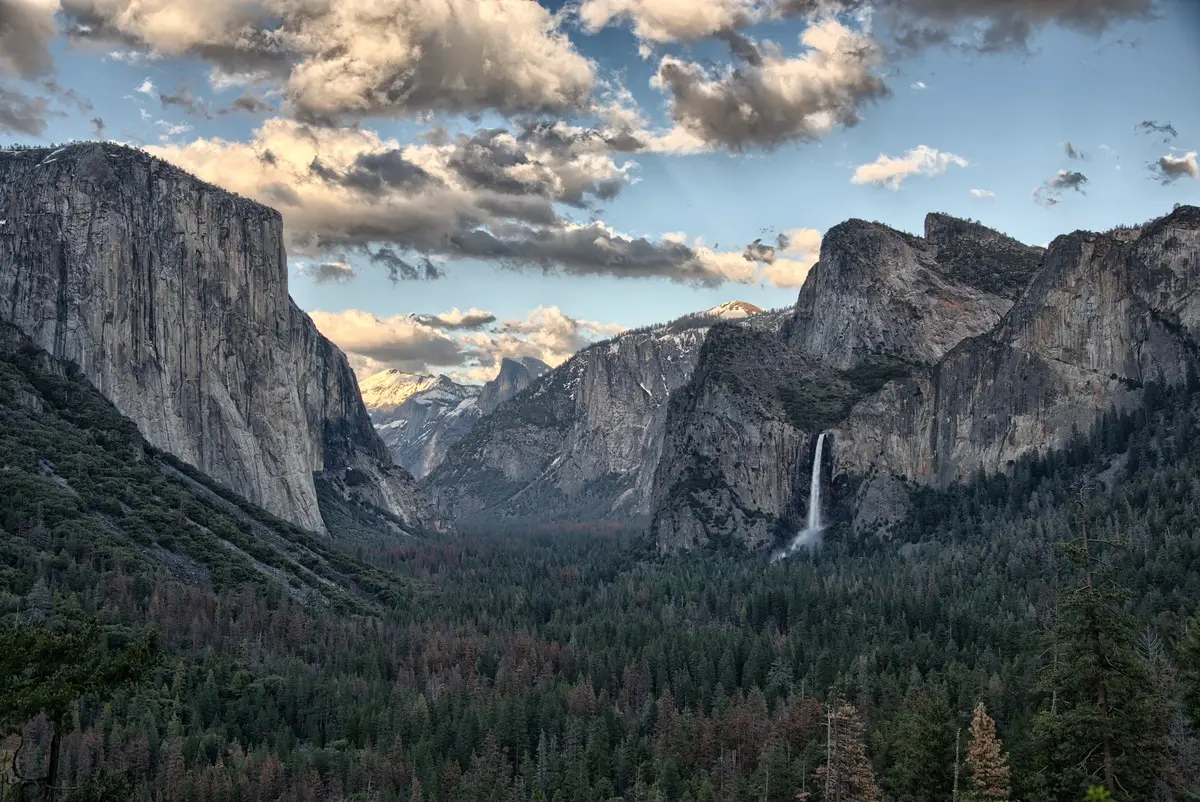
Wonders of the United States
The United States of America is one of the largest countries in the world and offers a wide array of diverse attractions: many are unsurpassed in the world. Highlights of the United States are cliffs, canyons, and rock formations, several impressive downtowns of cities with numerous skyscrapers as well as a rich array of geothermal features, and the giant forest of California.
 Recommended books
Recommended books

